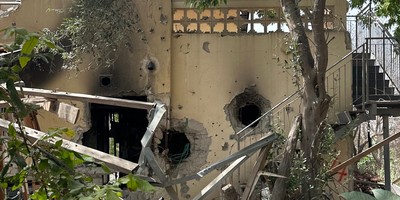Ten years, $1.7 trillion dollars and 4,800 casualties. This was the cost of America’s effort to remove Saddam Hussein and enable the growth of the Middle East’s first Muslim democracy. Ten years later, the debates about the merits, rationale, and underlying intelligence of the war rage on.
So does the battle against radical, violent Islamists.
Indeed, since “shock and awe” was visited upon Saddam’s regime, the threat nucleus has shifted from Baghdad to Tehran, and beyond. Fears of WMD in Iraq were not born out, but fears of a nuclear Iran appear increasingly credible. Beyond Iran, Gaddaffi and Mubarak have been dethroned, replaced by Islamists hostile to the United States and democratic modernity. Bin Laden is dead, but his network’s franchisees have opened up shop across the Middle East, Africa, and Indonesia.
The threat adapts and grows, but America now fights with fewer tools. Enhanced interrogation, the subject of so much vitriol and hyperbole after its application to three admitted terrorists, has been scuttled in favor of enhanced assassination (of at least 2,000 Al Qaeda and/or Taliban combatants) by predator drone and presidential whim, with little concern for the legalities. Not to worry, we are told, the President is not Dick Cheney. True enough: the Bush administration sought and received Congressional authorization for its wars. Twice.
Recent commentators have suggested the president codify his drone power through legislation. Others have recommended a drone court similar to the FISA court that hears requests for wiretapping warrants. These proposals may prove useful, but they fail to address the larger problem, the lack of a coherent national security strategy.
Recommended
The nation’s national security strategy from September 2001 to January 2009 was tripartite and clear: you’re either with us or against us; there is no distinction between terrorists and the nations that harbor them; and America stands with those who stand for freedom.
This framework necessarily led to the expulsion of the Taliban in Afghanistan, the destruction of Saddam’s Baathist regime in Iraq, support for free elections in the West Bank and Egypt, and strong support for the democratic aspirations of Poland, Georgia and other former Soviet satellites. While there were errors and stumbles along the way, the framework guiding the overall security strategy was clear enough.
The inherent weakness of the Obama approach, demonstrated in the administration’s inconsistent interventions, leaks and cabinet appointments, is that there is no guiding narrative, save the avoidance of any outward comparisons to the prior administration. As one commentator said, the Obama approach to national security evidences not change, but continuity you can believe in. Thus, Gitmo stays open, rendition continues, military tribunals proceed, drone strikes are expanded, the SWIFT program continues, and foreign aid still flows to Egypt.
The problem with this operational continuity in the face of radically changed public rhetoric and strategic withdrawal is that the country becomes alienated from the wars it prosecutes. The nation’s attention fades from the battlefields as the war rages on. Troops continue to fight and die and the nation forgets or wonders why we’re still at war.
This public relations mission muddle is entirely new, and unnecessary. Say what you will of the Bush administration, but its commitment to publicly supporting the War on Terror, vocalizing its rationales, and trumpeting its successes, though they were sporadic and won at great price, gave a measure of credibility to the strategic goals animating the ongoing operations. As President Bush said, we fight them there so we don’t have to fight them here. In furtherance of this, he prosecuted the war abroad and kept the nation safe.
Now the United States withdraws from Iraq and Afghanistan and increasingly fights the War on Terror via Hellfire missiles. It eschews the messy but necessary work of interrogation, which leads to plot disruption. Instead of detaining terrorists at Gitmo, the President sends them to federal court in New York. The Obama War on Terror is both more remote and closer to home. The American people need an explanation for this cognitive dissonance.
A previous war-time leader set the vision this way: “We shall not flag nor fail. We shall go on to the end. We shall fight…on the seas and oceans; we shall fight with growing confidence and growing strength in the air. We shall defend our [land] whatever the cost may be.”
No one expects from the president the oratorical grandeur of Churchill. But the nation, and especially our military, needs a purpose for which to fight, and a strategic goal for which to strive. Ten years after Iraq, as the nation continues to wage war against radical Islamic terrorists across the globe, the president owes our troops, and the nation, at least that much.

























Join the conversation as a VIP Member